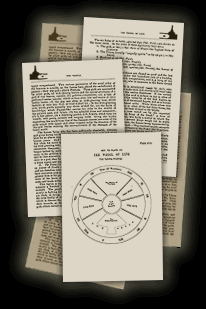
 1894.
By Laurence Austine Waddell (1854 - 1938)
1894.
By Laurence Austine Waddell (1854 - 1938)
![]()
This
work gathers observations made during the author's tenure as a British
civil servant in the vicinity of Darjeeling. The book contains many valuable
drawings and diagrams, and a wealth of data about Buddhist practices and
doctrines in Sikkim. At the same time, it must be read with an awareness
of the prejudices of Waddell and his contemporaries (see below).
![]()
These
files are formatted for Adobe Acrobat
Reader.
| Lamaism In Sikhim | (1.3MB) |
| Its Monasteries | (1.7MB) |
| The Pictorial Wheel of Life | (960K) |
| The Altar and Its Objects | (768K) |
| Lamaic Rosaries | (960K) |
| List of the Masks | (128K) |
| The Lamaic Library | (352K) |
| The Monkhood | (2.6MB) |
| Magic Rites | (4.5MB) |
| Demonolatry | (4.0MB) |
![]()
The
term 'lamaism' is now rarely used, both because it gives the impression
of a religion which is somehow non-Buddhist, and because of lingering
Victorian connotations of the lama as pernicious mystifier of his followers.
For Waddell and his contemporaries, the Buddhism of the Himalayas marked the lowest point in an historical degradation of Buddhism from its illustrious origins. These Victorian scholars presented the 'original' Buddhism of pre-common-era India as a rationalistic, philosophical movement, a humanistic worldview strikingly in accord with late nineteenth century scientism. Taking liberties with Pali Buddhist texts where necessary, they underplayed scriptural references to magical feats, spirits and gods in promoting this interpretation, and with it, the popularity of early Buddhism among their contemporaries.
In contrast to these idealized origins, later developments of Buddhism such as the Mahayana and especially the Vajrayana of the Himalayas were criticized as deplorable accretions of superstition and mysticism. Himalayan Buddhism in particular was regarded by Waddell as indigenous devil worship only slightly mitigated by a veneer of Buddhist doctrine.
Despite his predisposition, Waddell's scholarship was groundbreaking and encyclopedic, often displaying an admirable objectivity. His works present a great deal of historical, ritual, and ethnographic data and information on basic Buddhist doctrines, and his curiosity and affection for these topics are readily apparent.
![]()
A few copies of the actual book are available with Kumar Gallery, New Delhi, India.